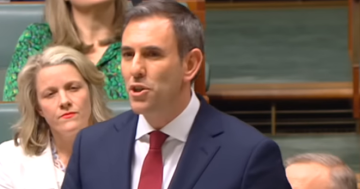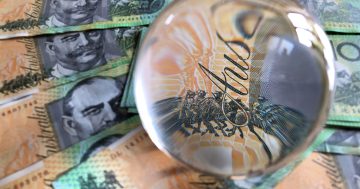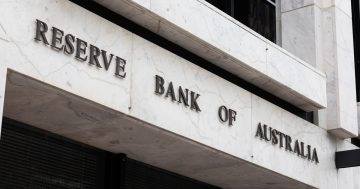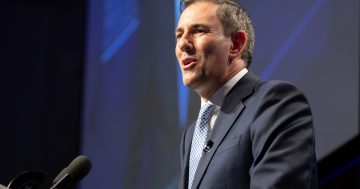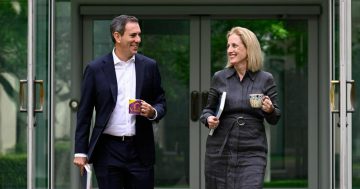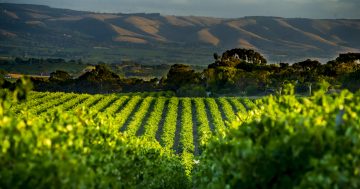Michael Janda and Rachel Pupazzoni* say while inflation eased slightly in October, the peak may be yet to come.
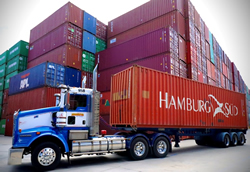 Inflation eased slightly last month, according to new monthly Australian Bureau of Statistics (ABS) figures, however both businesses and economists say it may not have peaked just yet.
Inflation eased slightly last month, according to new monthly Australian Bureau of Statistics (ABS) figures, however both businesses and economists say it may not have peaked just yet.
The monthly consumer price index (CPI) rose 6.9 per cent over the year to October, down a little from the 7.3 per cent headline inflation rate recorded in September.
A large fall in fruit and vegetable prices between September and October was a key contributor to the decline, with the annual price increase for that segment dropping from 17.4 to 9.4 per cent.
Clothing and footwear prices also fell back from a 7.1 per cent annual rate of increase to 5.7 per cent, while the end of the school holiday peak saw travel price increases ease from 12.6 per cent over the year to September to 3.7 per cent over the year to October.
Higher costs are starting to hit at the Lash and Brow Boudoir and Skin clinic in Melbourne.
“I think everybody’s feeling it at the moment,” said skin therapist and marketing manager Jess Lloyd.
“Anywhere between 4 per cent to 10 per cent [increase] with all the all the expenses going up, we’ve also got the wages as well.”
The business diversified into e-commerce during COVID lockdowns, selling skin care products online, and Ms Lloyd said both sides of the business were facing higher costs.
“Our rent and utility bills, they’ve increased, even small things like salon consumables, for example,” she told The Business.
“I know it sounds silly, but tissues have gone up in prices and we use a lot of them at the salon.
“We use skincare in the treatment room and a lot of our suppliers really struggled sourcing certain ingredients throughout COVID, so they’ve had to increase the prices of their products as well.
“So it’s been kind of a bit of a snowball effect.”
The business has tried to absorb some of those higher costs, but has also passed on some to their customers.
“We have had to look at our prices and we will be making some slight price increases … it could be anywhere from a few dollars to $5,” Ms Lloyd said.
Has inflation peaked?
Ben Kerr, chief executive of Eco Outdoor, told The Business that some costs that rose sharply in the past year were starting to plateau, or even fall.
“About this time last year, we had quite a big shock with our very large increases in sea freight, international freight in all markets — so in Australia, New Zealand and America — but I think that has started to moderate,” he said.
“We’re starting to see shipping costs come down significantly, not quite back to what they were pre-COVID, but I think those costs have been kind of augmented by increases in supply costs, so really we’re seeing prices starting to stabilise.”
His company, which sells outdoor wall and floor materials as well as outdoor furniture, imports a lot of its product from Europe, where skyrocketing energy bills are driving inflation.
“Some of our suppliers in Europe have had energy costs of increases of up to 700 per cent in gas costs,” he observed.
“So we’re starting to see a reduction in shipping costs to Australia, but then increases in production costs.
“But I think definitely, we’ve seen the peak.
“I would say prices are going to stay steady.”
Mr Kerr, who has showrooms throughout Australia and New Zealand, as well as the US, told The Business he expected costs to hover where they were for some time.
“I actually feel like we’re really returning more to a normal state, in terms of interest rates, you know, with a sort of net cost to the consumer of 5 to 6 to 7 per cent,” he said.
“That’s historically pretty normal.
“So I think the we’re just returning to a more stable, sustainable economy.”
Marcel Thieliant from Capital Economics said “the data suggests that inflation is about to peak”, although it might not be quite there yet, as floods might cause a renewed spike in fruit and vegetable prices.
“What’s more, today’s release doesn’t include any update to utility tariffs,” he wrote.
“The ABS will only include those in the December figures, which will be released alongside the fourth quarter data in late-January.
“Electricity prices jumped by 15.6 per cent quarter-on-quarter last quarter but the CPI showed a much smaller 3.2 per cent increase because most of the increase was offset by government rebates.
“We’re assuming that those rebates will have largely run their course this quarter and have pencilled in a 10 per cent quarter-on-quarter jump in electricity tariffs.”
BetaShares chief economist David Bassanese said the data strengthens the case for the Reserve Bank to pause rate rises after an expected increase next week.
“Assuming the RBA raises rates by 0.25 of a percentage point next week, it will represent a substantial 3 percentage point lift in the cash rate within the year – which will be the biggest eight-month change in the cash rate since cash rate targeting was implemented 32 years ago!” he noted.
“At a time when home loan affordability is already near its worst levels in 30 years (when mortgage rates were around 15 per cent), wage growth and inflation expectations remain contained, and the US economy faces a growing risk of recession, it suggests the RBA can afford to tread a little more cautiously in raising rates in the new year.”
Open borders help lower inflation
The ABS said about half of the decline was due to an annual reweighting in the basket of goods and services measured for the CPI.
The removal of COVID travel restrictions, both domestic and international, over the past year has seen a dramatic increase in the weight of travel services in the index.
“The update to weights in October saw several changes, the most significant being international travel, which increased from 0.1 per cent of the CPI basket to 1.9 per cent,” said Michelle Marquardt from the ABS.
If the weighting had remained the same as in the September figures, annual inflation would have been 7.1 per cent in October rather than 6.9 per cent.
The main price increase between September and October was for rents, which saw annual growth of 3.5 per cent, up from 2.9 per cent.
*Michael Janda is the ABC’s Online Business Reporter. Rachel Pupazzoni has been a journalist with ABC News since 2006. She is currently a multi-platform reporter with the Business News team, based in Sydney.
This article first appeared at abc.net.au.


